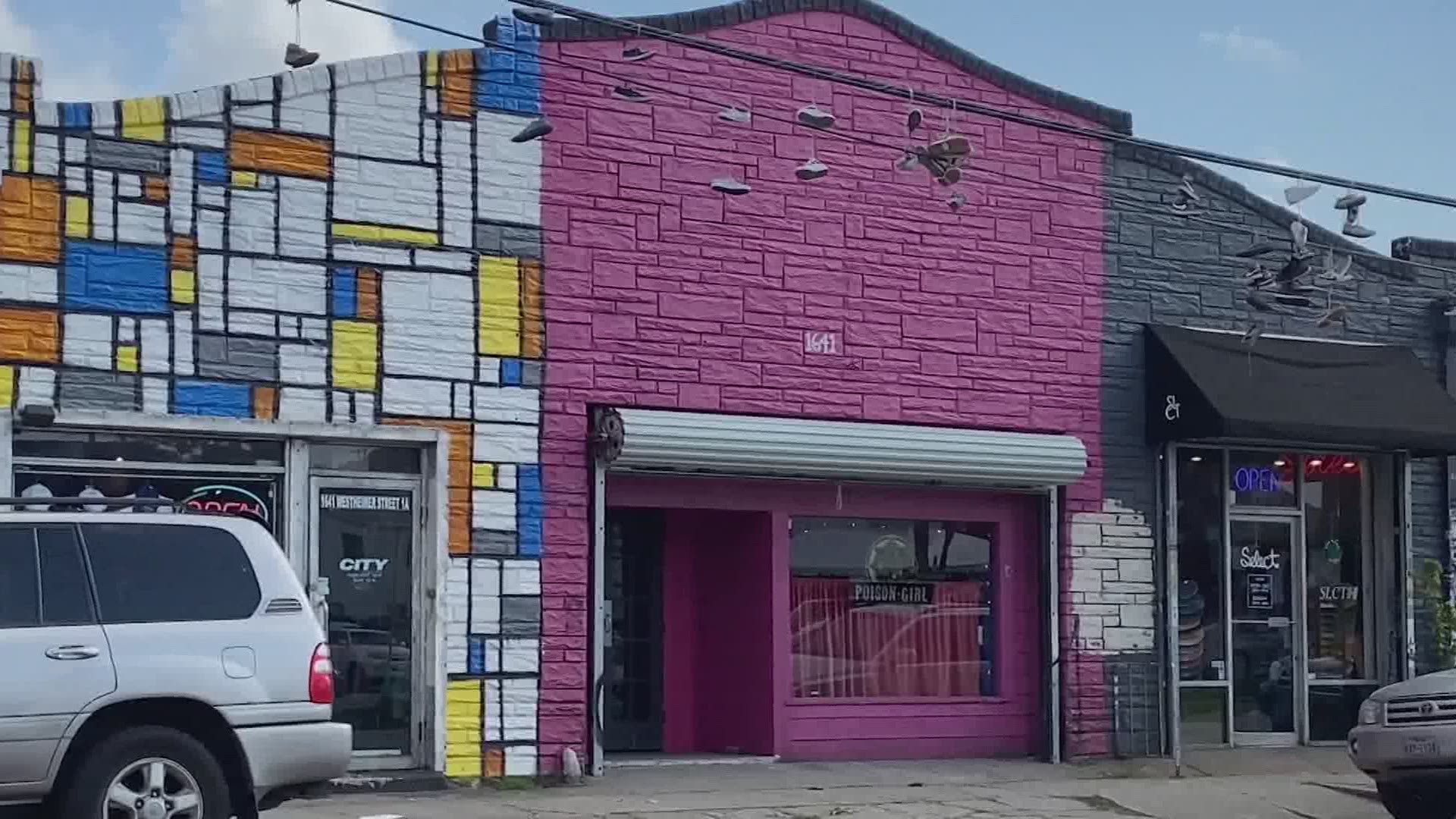HOUSTON — From the rainbows of Westheimer to the leather of Ripcord, the art of Rothko Chapel to the bands at Numbers, the Montrose neighborhood has a unique look and feel.
"It’s such a mixture of different things and different people," says Austin Davis Ruiz.
You could describe it as colorful, like the flags you’ll spot all over what’s known as Houston’s 'gayborhood.'
It looks very different than it did when it was first platted in 1911.
"It was originally a middle- and upper-class neighborhood," says Brian Riedel, associate director at the Center for the Study of Women, Gender & Sexuality at Rice University.
He dug into Montrose history when he moved to Houston in the late ‘90s.
"People ask me, ‘When did it become gay?’" Riedel says. "It’s a very interesting question to try to answer. What do you take as the beginning of it being gay?
Artists started moving in in the 1930s, so that’s one option.
But Riedel thought the creation of LGBTQ-friendly businesses would provide a clear illustration of the neighborhood’s evolution.
Starting in the 1950s, he mapped out the city’s gay bars and institutions, like Art Wren’s.
"That would be today where Katz’s Deli now stands on Westheimer," explains Riedel.
The maps show slow growth until after 1969, when the area exploded.
"It wasn’t until after 1969, in fact the 1970s, that Montrose became the dominant center," Riedel says.
Gay rights opponent Anita Bryant’s visit to Houston galvanized the queer community in 1977, resulting in Houston’s first Pride celebration in 1978. During that week, a coalition of activists and advocates held Town Meeting 1.
"One of the organizations that came out of that meeting was the Montrose Counseling Center, which is us," says Davis Ruiz, marketing and communications manager for what is now called the Montrose Center.
What began as a volunteer clinic is now a vital resource for LGBTQ people all over the greater Houston area, more than 40 years after it got its start.
"It’s incredibly important - maybe now more than ever - to continue to have places like the Montrose Center that are exclusively LGBTQ-affirming, to really take care of our community," Davis Ruiz says.
It can be easy for those of us who aren’t LGBT or Q to think of Montrose as a safe space for the alphabet mafia, but it never really was.
"It attracted people to come beat up gay community," says Riedel. "Not just Paul Broussard, but many others."
Paul Broussard was one of a trio of friends attacked by a gang of ten young men in Montrose in 1991. Jon Buice served 23 years of his 45-year sentence for the murder.
"I don’t want to fall into the mythology that Montrose was somehow a safe space for everybody in the ‘70s, ‘80s and ‘90s," Riedel says.
He researched the issue for a 2020 article entitled Cruising Grounds: Seeking Sex and Claiming Place in Houston, 1960-1980, which examines queer territorialization and place claiming in Houston.
"Part of what makes Montrose the incredible and diverse space that it is is that it matters to so many different kinds of people: musicians, artists, social justice organizations, social work organizations, churches," says Riedel. "All of them find themselves in the same geographic space."
Ultimately, that is why the Montrose Center decided to use the neighborhood as a namesake.
"It’s an immediate signal to tell people that we are affirming and we are welcoming to the community," Davis Ruiz says.
Since its founding more than 40 years ago, the center has adapted and grown right along with Montrose itself.
"The history of Montrose is not done," says Riedel.

